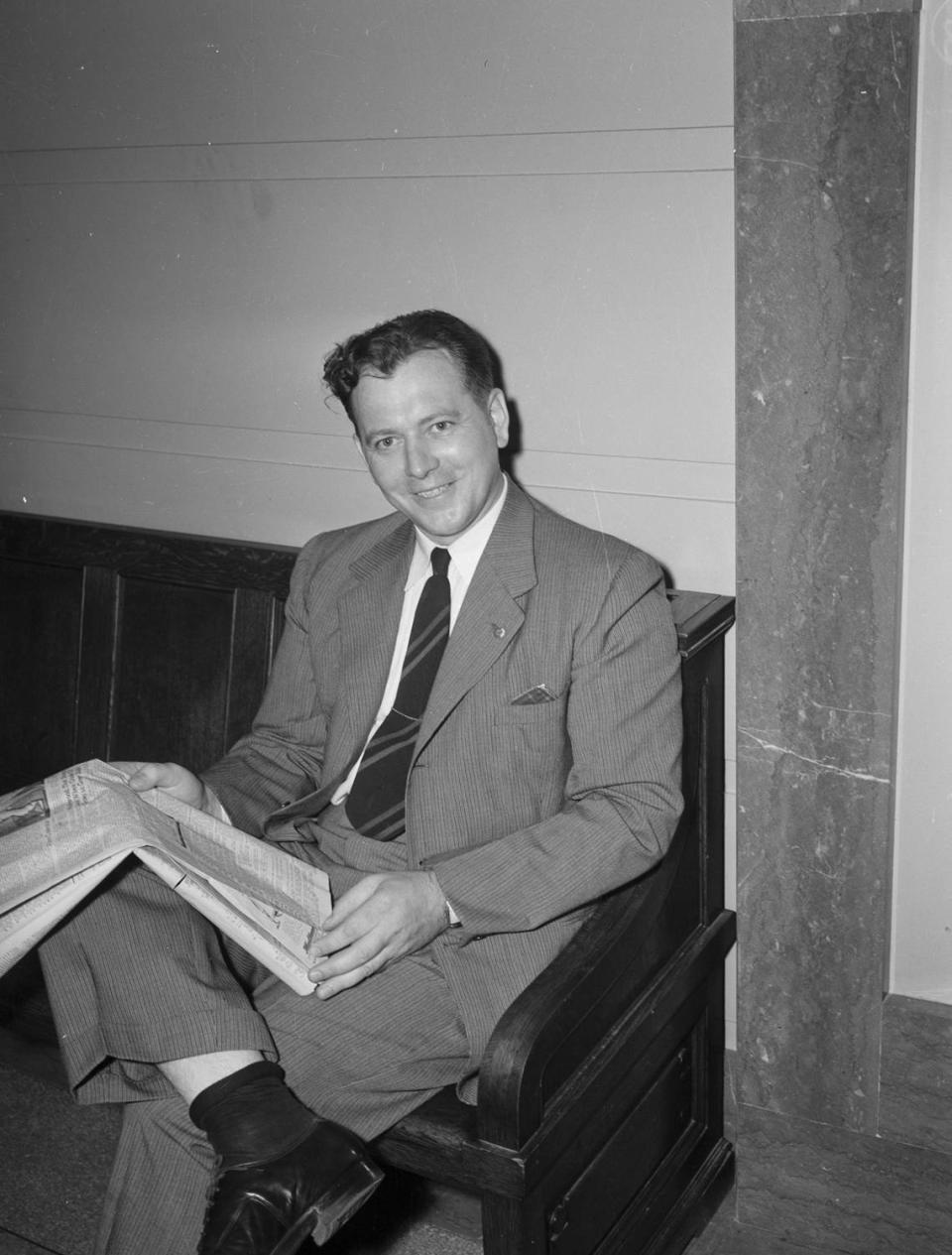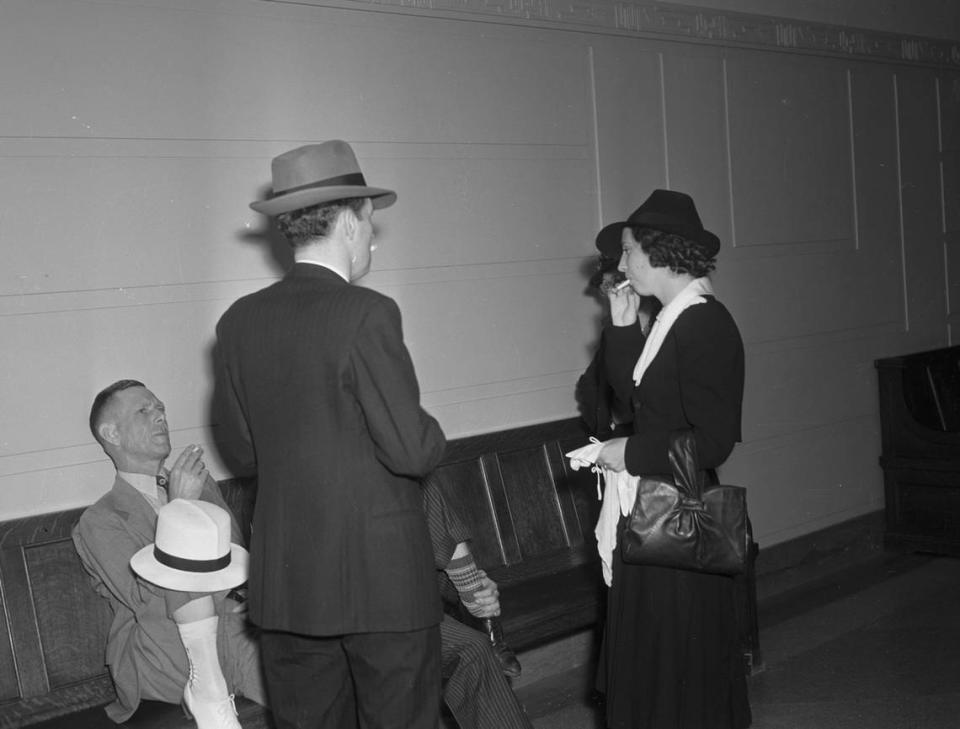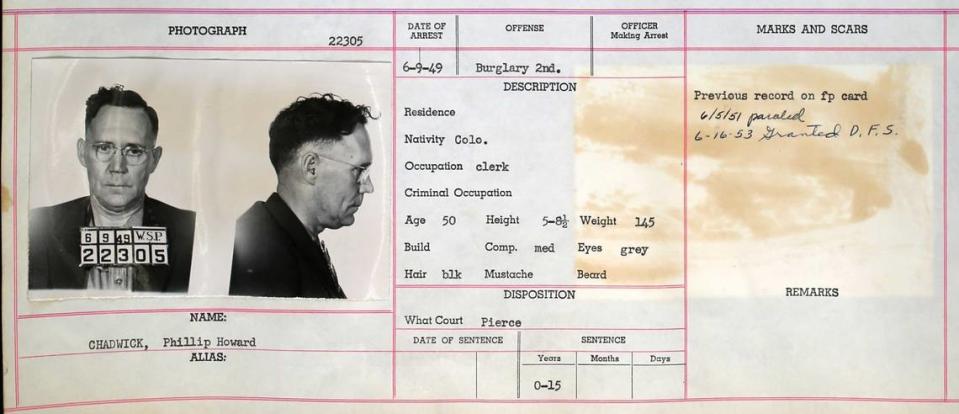29 indicted. How Fort Worth’s infamous Green Dragon drug ring came unraveled in 1940
Our Uniquely Fort Worth stories celebrate what we love most about North Texas, its history & culture. Story suggestion? Editors@star-telegram.com.
Who knows? The “wood for sale” want ads in the late 1930s might have been a code for “buy your heroin here,” or they may have just been a front for the $3 million (almost $64 million in 2024 dollars) narcotics ring operated out of an unassuming farm on Randol Mill Road between Fort Worth and Arlington.
Regardless, it was an upstart operation intended to take over business from a New York drug ring known for its “fine” heroin. The New York operators used a drawing of a green dragon on their product packages – indicating its quality. The Fort Worth ring cut its heroin with more filler –producing a lower grade product – but still used the green dragon logo.
The Tarrant County Green Dragon ring started in November 1937 with foreign heroin brought in through Texas ports, as well as those in New York, San Francisco, and New Orleans. Many of the people involved had links to organized crime in Chicago.
Not content with a slow delivery system, members of the Green Dragon team sometimes moved product via airplane flights, carrying heroin in their purses and briefcases. Needless to say, airport security was almost nonexistent in those days.
Green Dragon was essentially a distribution operation, buying larger quantities of both heroin and morphine, processing them for street sale, and then selling that product to street-level dope pushers.
Who were the players in drug ring?
Phil Chadwick, who used at least 23 aliases including “Pete Sheridan,” was the local head of the gang. As Sheridan, he played the part of a gentleman farmer buying livestock for the Randol Mill property. As Chadwick, he directed drug ring operations, and provided safe haven for his staff who came too close to being captured.
Chadwick and his wife, May (or, perhaps, Thelma – it’s hard to determine), also rented a home at 5113 Pershing Ave. on the west side, where Indigo Yoga is now located.
Nelson Harris, a local gambler, bouncer, and restaurant/club manager, served as a $25 per week bodyguard for Chadwick, but was also responsible for delivering drug orders. He also had connections to the performers who worked at Casa Mañana during the late 1930s and invited them to patronize his establishments.

Another local couple involved in the operations was Marie and Dewey Ross. Marie Ross was a heroin addict, which may have spurred the couple’s involvement. Chadwick reportedly made contact with Dewey Ross by means of a torn dollar bill. Ross made a buying trip to New York, where he saw his contact tear a dollar bill in half. The contact gave Ross half of the bill and told him someone would contact him in Fort Worth.
Chadwick contacted Ross on June 20, 1938, and set up a meeting at Seventh and Houston. When Ross arrived, Chadwick showed him the other half of the dollar bill. The two halves matched up, bringing the Rosses into Chadwick’s operation. At times, the couple stayed at one of the Randol Mill farms.
Also essential to the Green Dragon operations was B. H. Schaffer, a federal narcotics agent based in Dallas. Schaffer offered Chadwick “protection and information” in return for payment.

Indictments and the trial
Phil Chadwick was tripped up by a true crime magazine. Jim S. Tomlin, an Arlington auto salesman, saw Chadwick’s photo in an issue of Inside Detective magazine and recognized him as the Randol Mill “gentleman farmer” that he knew as Pete Sheridan. The jig was up.
The feds handed down a May 1940 indictment naming 29 people, including the Chadwicks, Rosses, and Schaffer. One person indicted was Jerry Siegel, based in Chicago. He was arrested and gave evidence, but didn’t make it to trial. Siegel was gunned down at 2 a.m. on June 23, 1940, outside a Chicago hotel. These folks didn’t mess around.
Those named in the indictment were arrested in New York, Chicago, Dallas, and Fort Worth.
Sensing danger, the Chadwicks had fled to Chicago. May Chadwick, who was arrested in the couple’s apartment there, was holding $75,000 worth of narcotics (about $1.7 million today).
The trial was held at Fort Worth’s handsome 1934 United States Courthouse, which faces onto Burnett Plaza. Both the Star-Telegram and Fort Worth Press covered the trial in detail. A Star-Telegram photographer stalked the hallway outside the courtroom, gathering photos of defendants who were used to operating in the shadows.
Phil Chadwick and the other defendants faced 42 counts of violation of the Harrison Anti-Narcotics Act. Not all of the 29 indicted were present. Three were still at large, three were fighting extradition, and Siegel was dead. Still, it was one of the largest groups of defendants tried in the Northern District of Texas.

May Chadwick testified, saying that if the plane she was on during one trip had crashed on the way back to Fort Worth it would have, “scattered dope all over Oklahoma.”
Marie Ross pleaded guilty and became a witness for the prosecution. The reporters loved thea ttractive young woman and hung on her every word. Ross spoke so softly that the court had to install a sound system so that she could be heard. Her testimony – like her husband’s – was detailed and damning for the other defendants.
The government’s case was successful. With the exception of one defendant who had simply rented the Pershing Avenue house to the Chadwicks, all were convicted. Thirteen were soon sent off to Leavenworth. Six of the 21 who were convicted appealed, including May and Phil Chadwick, who had been sentenced to two years and twelve years, respectively.
After all of their appeals were exhausted and the Chadwicks were facing federal prison sentences, they did what a number of career criminals have done - they disappeared.
The couple remained at large for almost two years before being recaptured in Tacoma, Washington. Phil Chadwick was sent to the McNeil Island Federal Prison in Washington state, while May Chadwick was shipped across the country to a federal prison in West Virginia. There, she disappears from view.
Phil Chadwick served his time in Washington, but apparently didn’t learn his lesson. In 1949 he was convicted of stealing narcotics from the Tacoma Drug Company and sentenced to three years in prison. After completing that sentence, he, too, disappears.

Nelson Harris wasn’t so lucky. After serving his sentence for Green Dragon activities in Leavenworth, Harris returned to Fort Worth and resumed his work in night clubs. He wasn’t arrested again. Harris and his wife were killed on November 22, 1950, by a dynamite car bomb.
His personal papers, which turned up at an attorney’s office, suggested that Harris might have been bribing police officers. The case was never solved, but it is clear that the underworld was still watching and didn’t approve of his activities.
Carol Roark is an archivist, historian, and author with a special interest in architectural and photographic history who has written several books on Fort Worth history.

